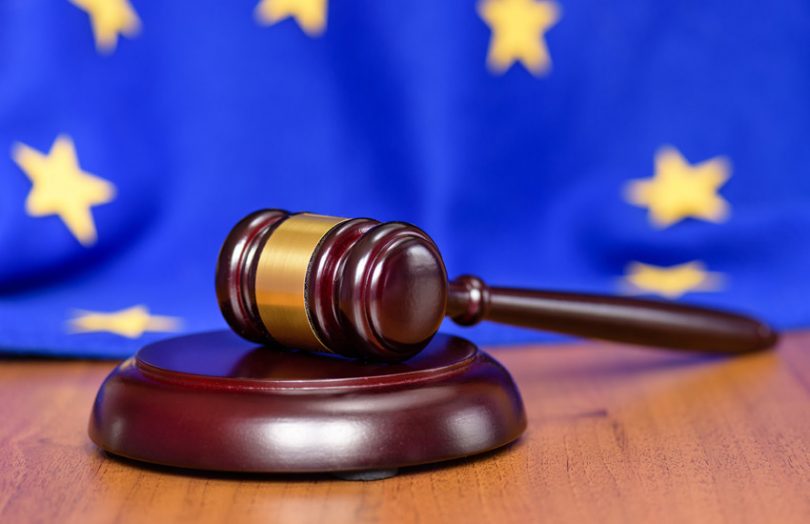On 16 September 2020, Politico published a leaked version of the European Commission (EC) ‘s draft legislation on Markets in Crypto-Assets (MiCA). This proposal aims to create a regulatory framework to enable the crypto-asset market, traditional financial asset tokenization, and the use of distributed ledger technology (DLT) in the financial services sector.
In addition to MiCA, the EU is considering amending existing legislation that currently obstructs DLT. For stablecoins in particular, a bespoke legislative framework is to be considered, as well as potential regulation under the existing Electronic Money Directive (EMD).
A very quick observation is that some of these draft MiCA rules have not considered Decentralized Finance (DeFi). The 168-page document doesn’t reference ‘decentralized’ at all. For example, tokens that are issued free seem to be largely exempted. But since June, just four ‘free’ DeFi tokens have been issued with a combined current market capitalization north of $2.5 billion. There is some risk for their secondary market investors. And as you’ll see, we suspect that the regulations won’t cover most of the decentralized exchanges, which are essentially automated smart contracts.
Current landscape
The lack of legal certainty and regulatory obstructions makes it hard for crypto-asset issuers and service providers to comply with any necessary requirements. The absence of an EU crypto-asset regulatory framework has led some member states to create their own policies, which only adds to the legal uncertainty and may create conflicting laws with other Members. The divergent frameworks, rules, and interpretations stop businesses growing, create an uneven playing field, and expose consumers and investors to significant risks.
The EU recommends a common framework to create an environment that welcomes cross-border business to develop, harmonizing crypto-asset requirements across the EU. Specifically, a regulation is recommended to immediately create a fully harmonized set of rules for issuers and service providers and to reduce market fragmentation that has arguably already begun. MiCA’s four general objectives are legal certainty, innovation support, consumer and investment protection & market integrity, and financial stability.
Categories of Crypto-Assets
Firstly, MiCA distinguishes between three subcategories of crypto-assets subject to regulation. The split is essentially utility token cryptocurrencies, complex “asset-referenced” stablecoins, and simple single currency stablecoins.
The asset referenced tokens will be subject to oversight by country regulators unless its large scale, in which case the EU makes a case for oversight by the European Banking Authority (EBA). In fact, the local regulator might have to consult the local central bank, ESMA, the ECB and the EBA.
For simpler stablecoins, MiCA recognizes that these types have similar functions to e-money (as defined under the EMD) and share similar purposes, as both ‘are electronic surrogates for coins and banknotes.’ However, not all simple stablecoins provide a right to redeem the money at par, which is required for e-money. The legislation seeks to bring these stablecoins into line with e-money rules.
A light touch for small issuers
While some subcategories of crypto-assets will have specific regulations, issuers of all types share similar obligations. Issuers are defined as ‘any person offering crypto-assets to third parties.’ They must be established as legal entities and act in an honest, fair and professional manner.
Issuers must publish a white paper containing disclosures before starting its public offering or trading of crypto-assets in the EU. The disclosures must include details such as the issuer’s general information, the offering or trading of crypto-assets, the related rights and obligations, and the underlying technology used. The document and marketing communications have to be submitted to the regulatory authority in the country of registration. The authority does not need to review the whitepaper, but they ‘will have the power to suspend or prohibit an offering’ if it does not comply with MiCA.
SMEs will be exempted from this obligation, but only where over a period of 12 months, the total consideration of the crypto-asset offering is less than €1 million. This is to avoid potential excessive administrative burdens. For stablecoin issuers, if the outstanding amount is below €5 million, they will not be subject to a competent authority authorization.
Crypto-asset Service Providers
Crypto-asset service providers are defined as ‘any person which provides any crypto-asset service on a professional basis.’ Services include exchanging crypto-assets against fiat currencies or other crypto-assets, ensuring their administration and custody, or operating a trading platform. But based on the description, we’re not clear whether this would cover a developer of a decentralized exchange that functions autonomously. We suspect not.
The services will be considered financial services under the Directive related to distance marketing of consumer financial services. As with issuers, they must act honestly, fairly, and professionally, with their clients’ best interests. Crypto-asset service providers will be subject to particularly strong organizational requirements, especially for anti-money laundering/counter-terrorism financing.
Sundry interesting points
- ESMA is recommended to establish a register of all crypto-asset service providers, to show which entities are authorized to provide these services across the single market.
- MiCA recognizes it may be disproportionate to impose all Market Abuse Regulation requirements on SMEs. Instead for crypto-assets, it’s providing watered-down market abuse provisions relating to insider dealing, information disclosures and market manipulation.
- Crypto-assets that are offered for free, only exclusively offered to qualified investors, or only offered to a small number of people per member state are recommended to be exempt from MiCA.
- MiCA’s definition of crypto-assets and DLT is to be ‘as wide as possible to capture all types of crypto-assets’ under its scope. For example, virtual assets will also be considered to be crypto-assets. The hope is that the regulation will be ‘future-proof’ and to keep up with technology and innovation.






